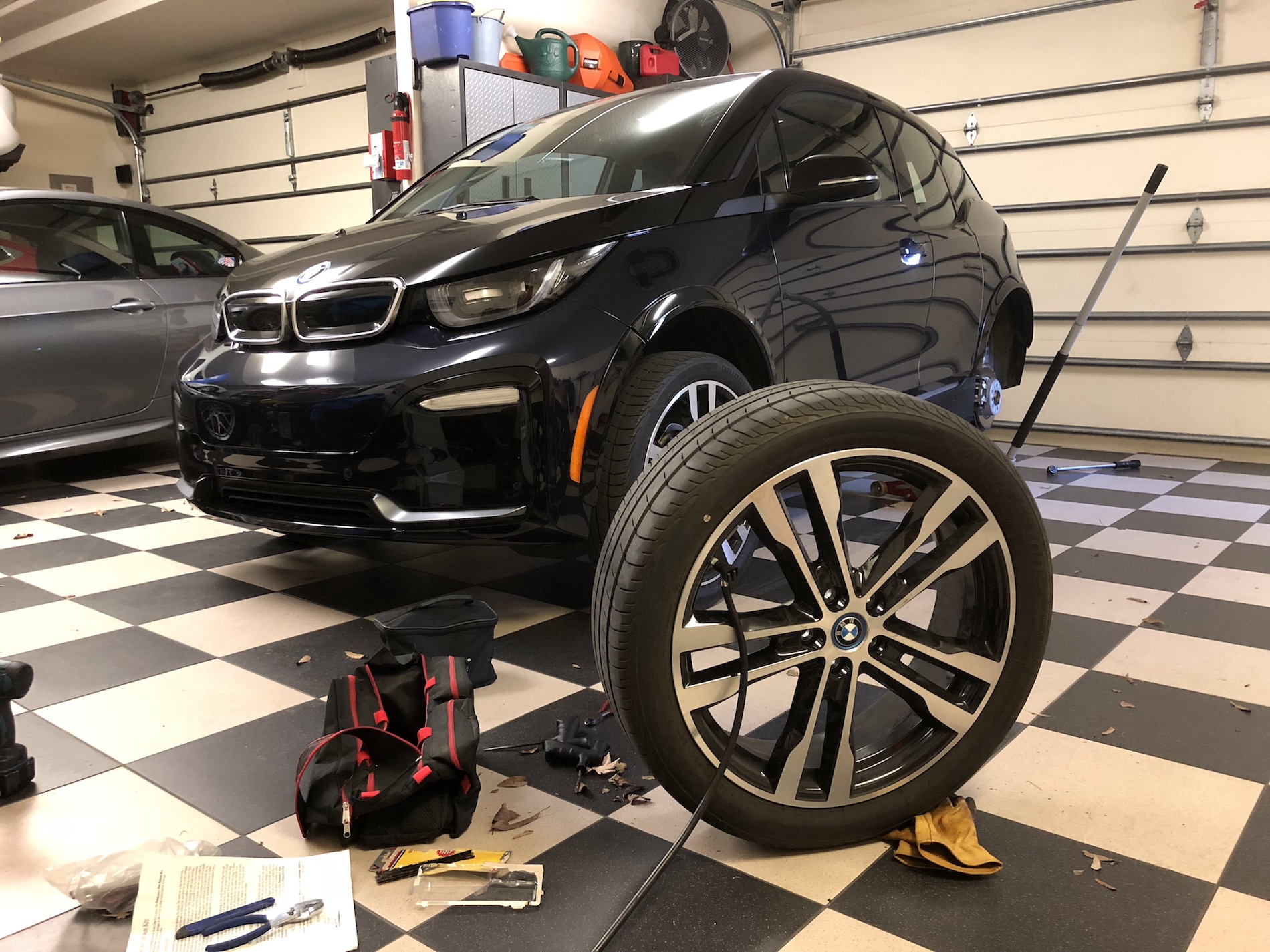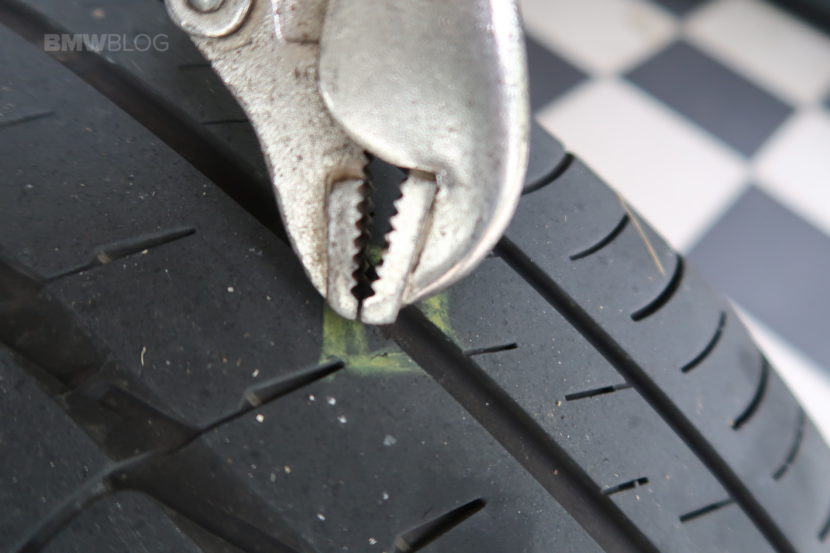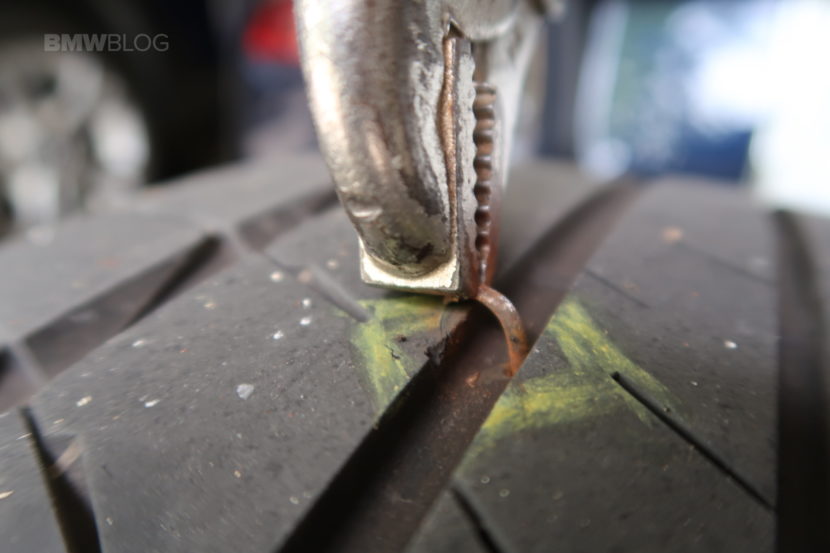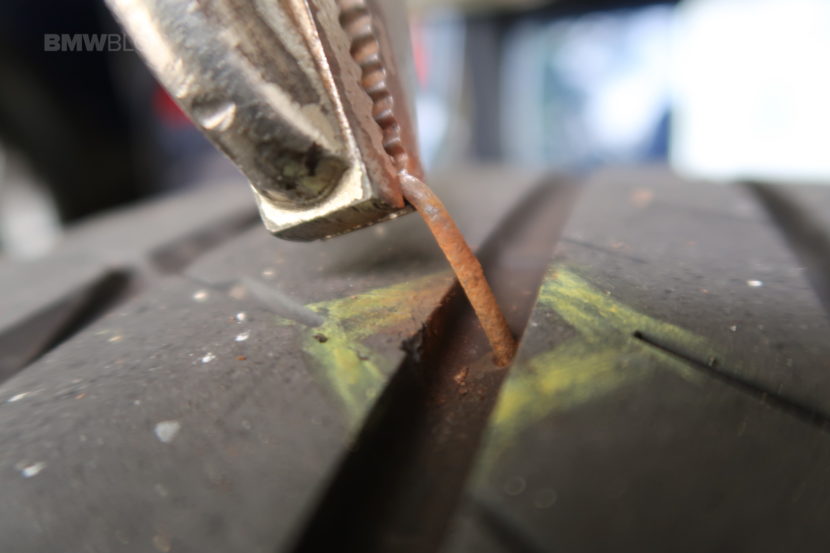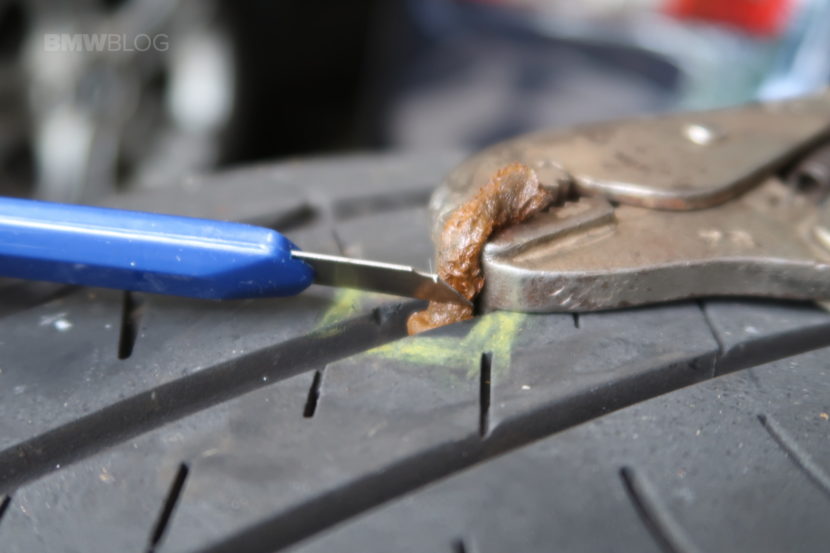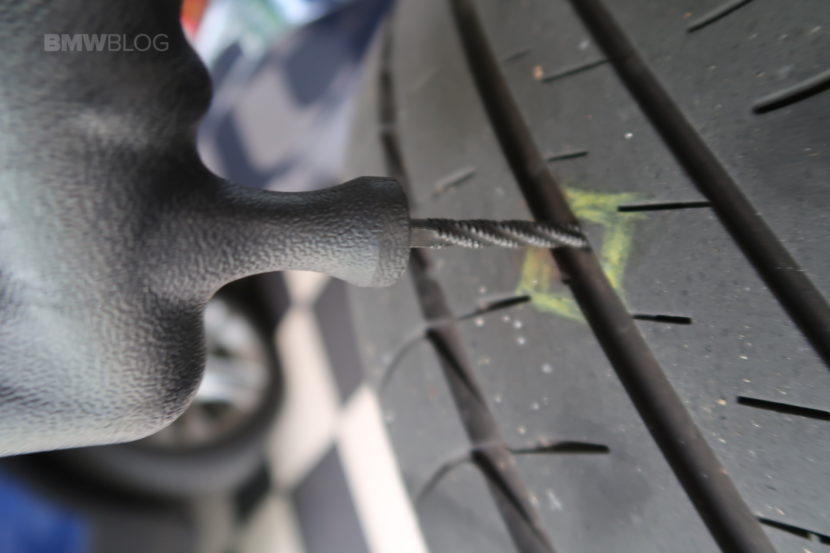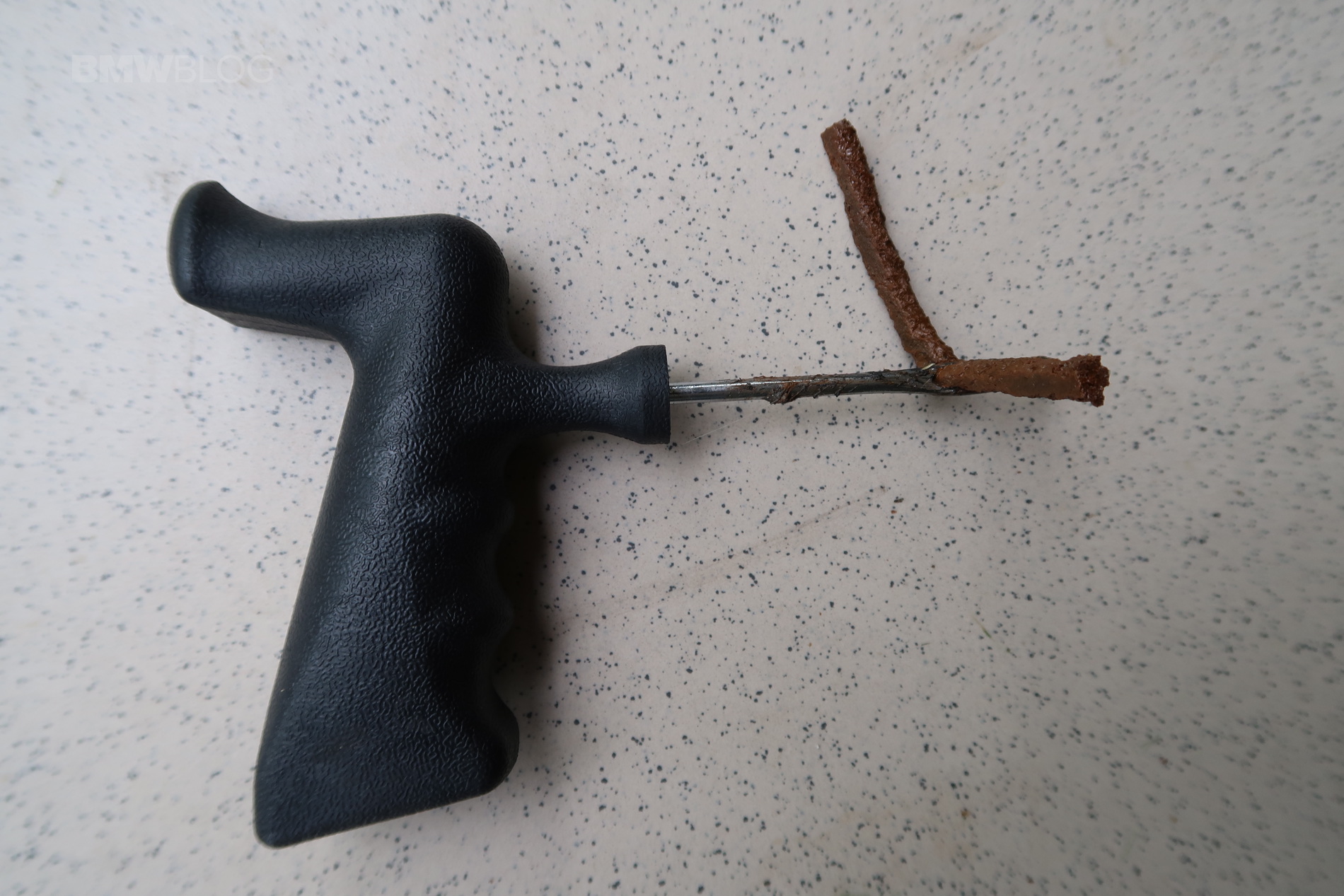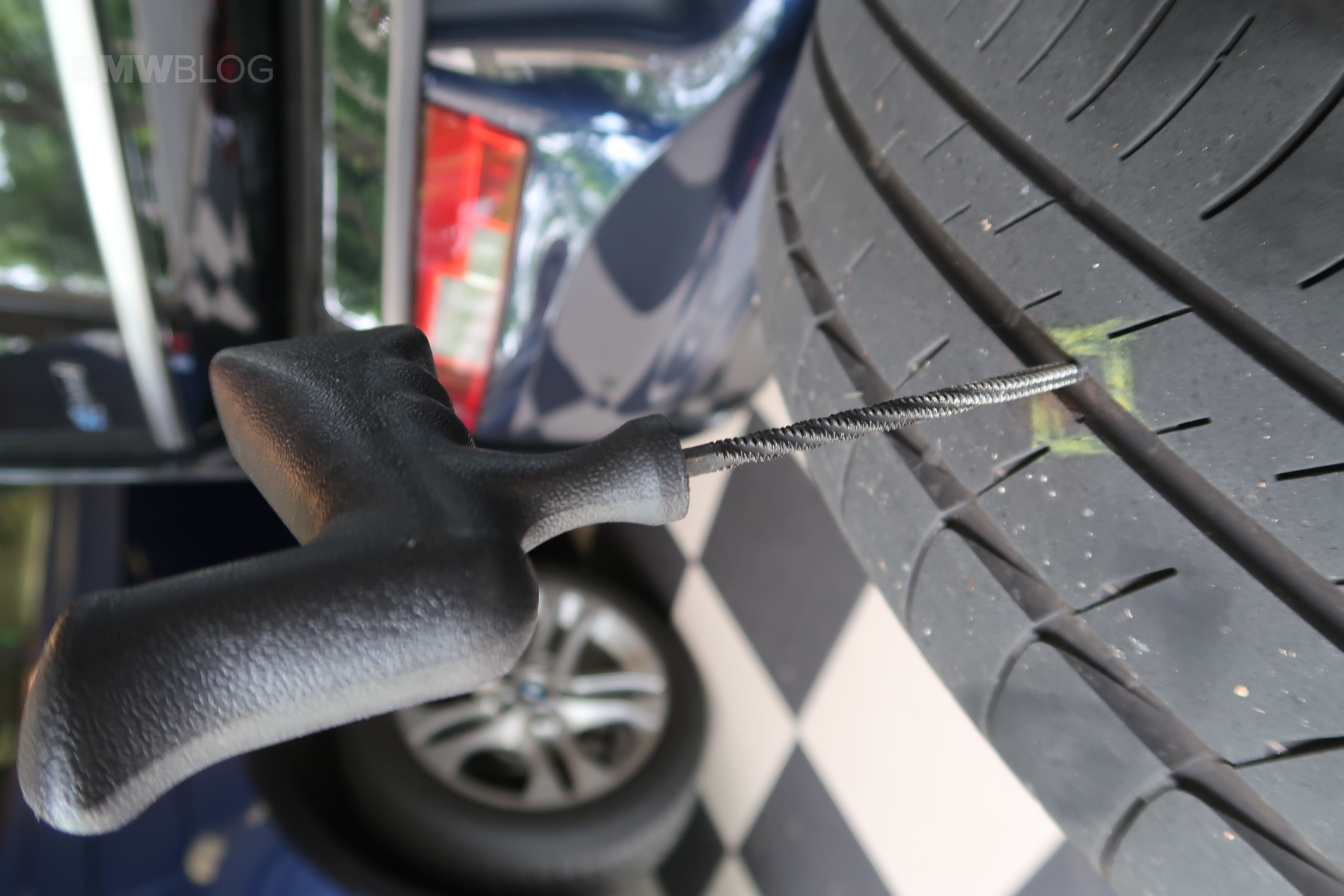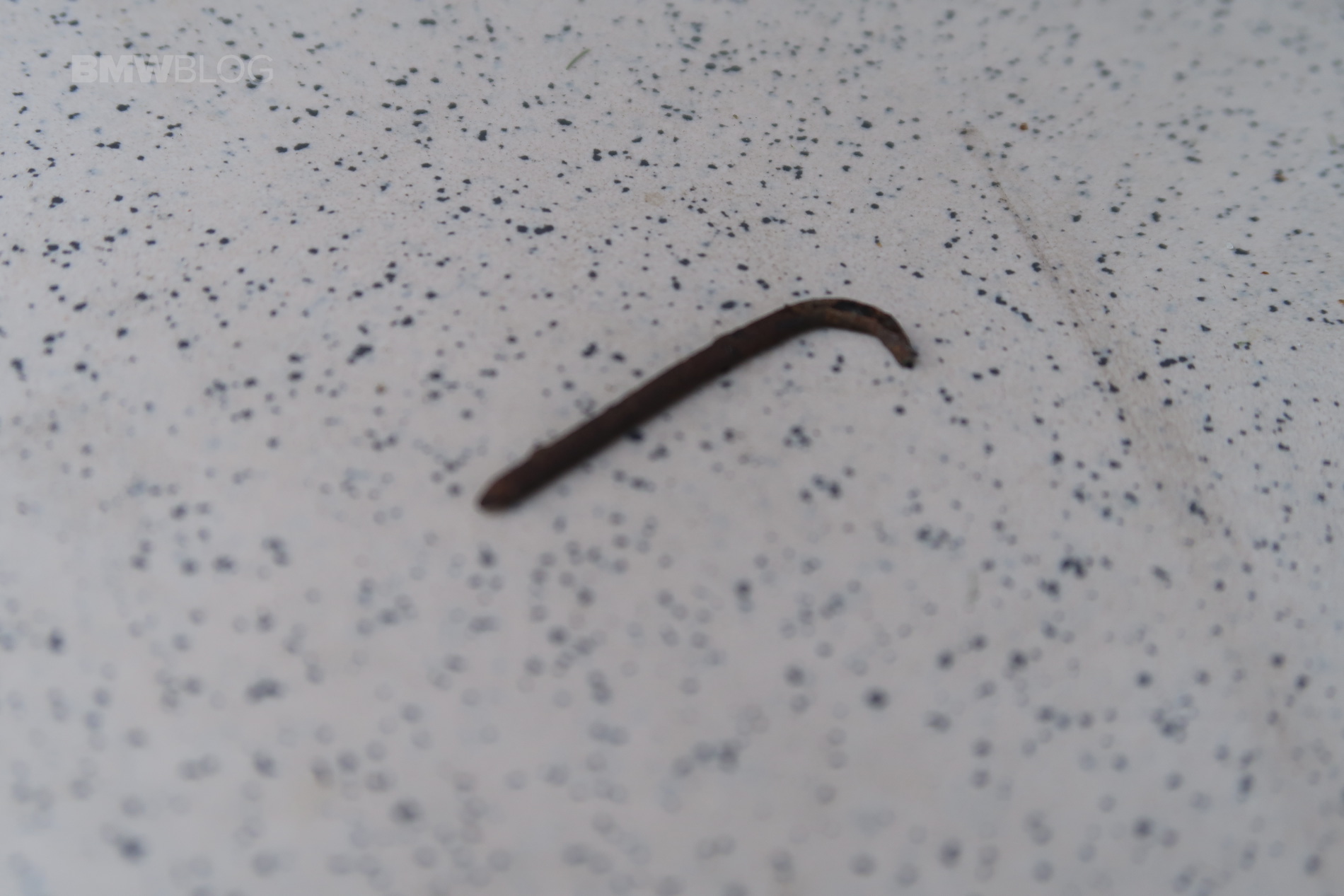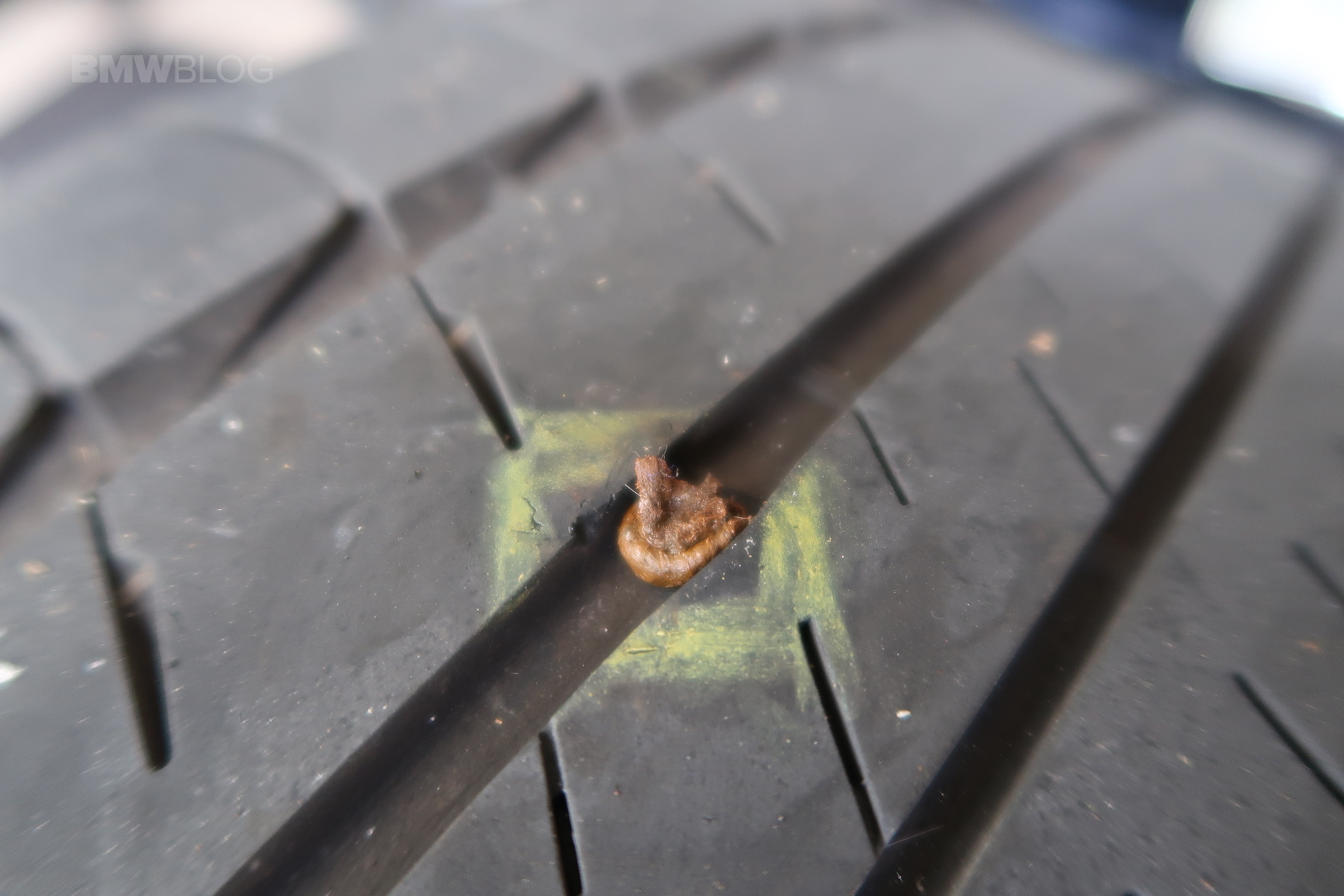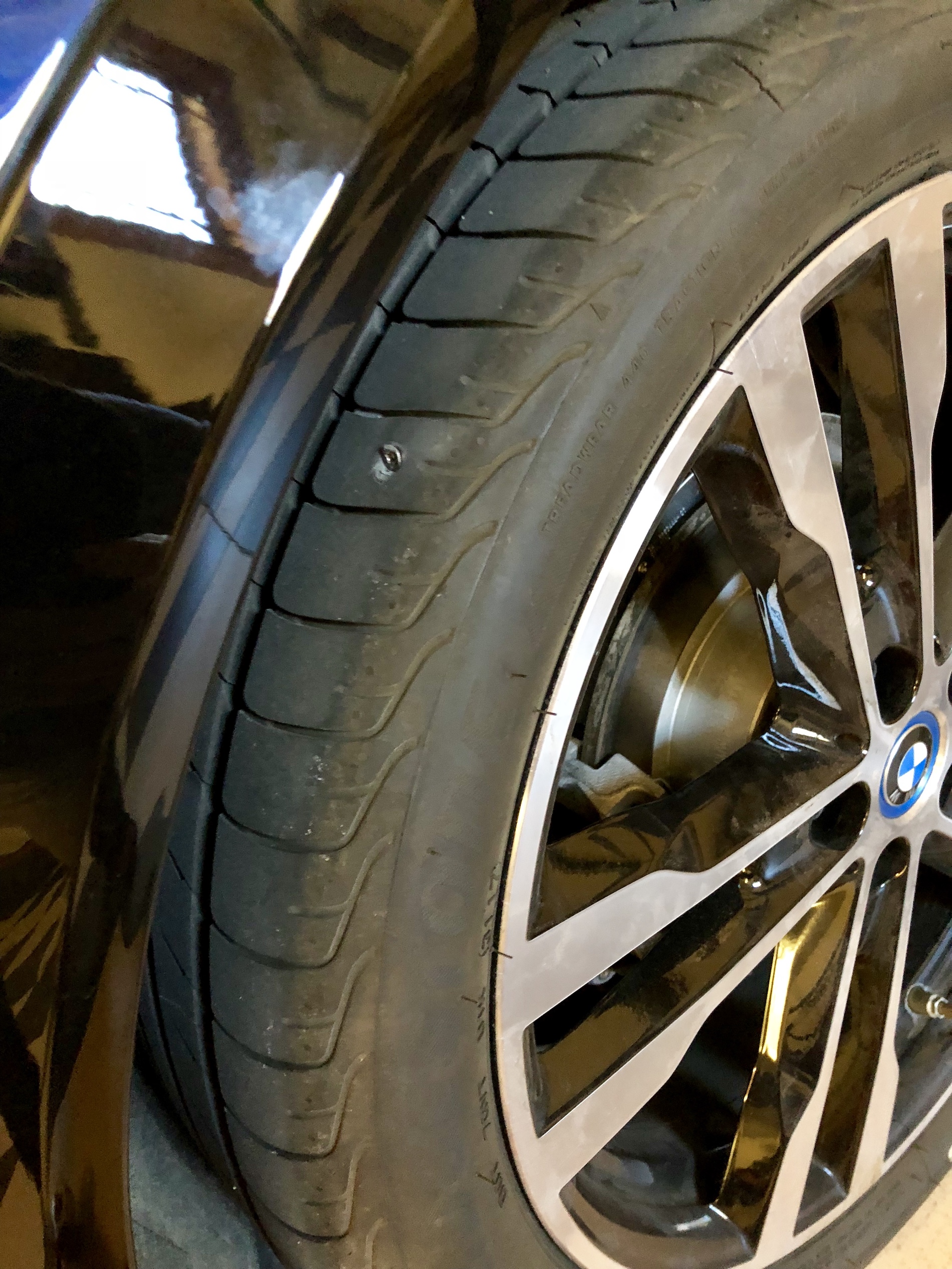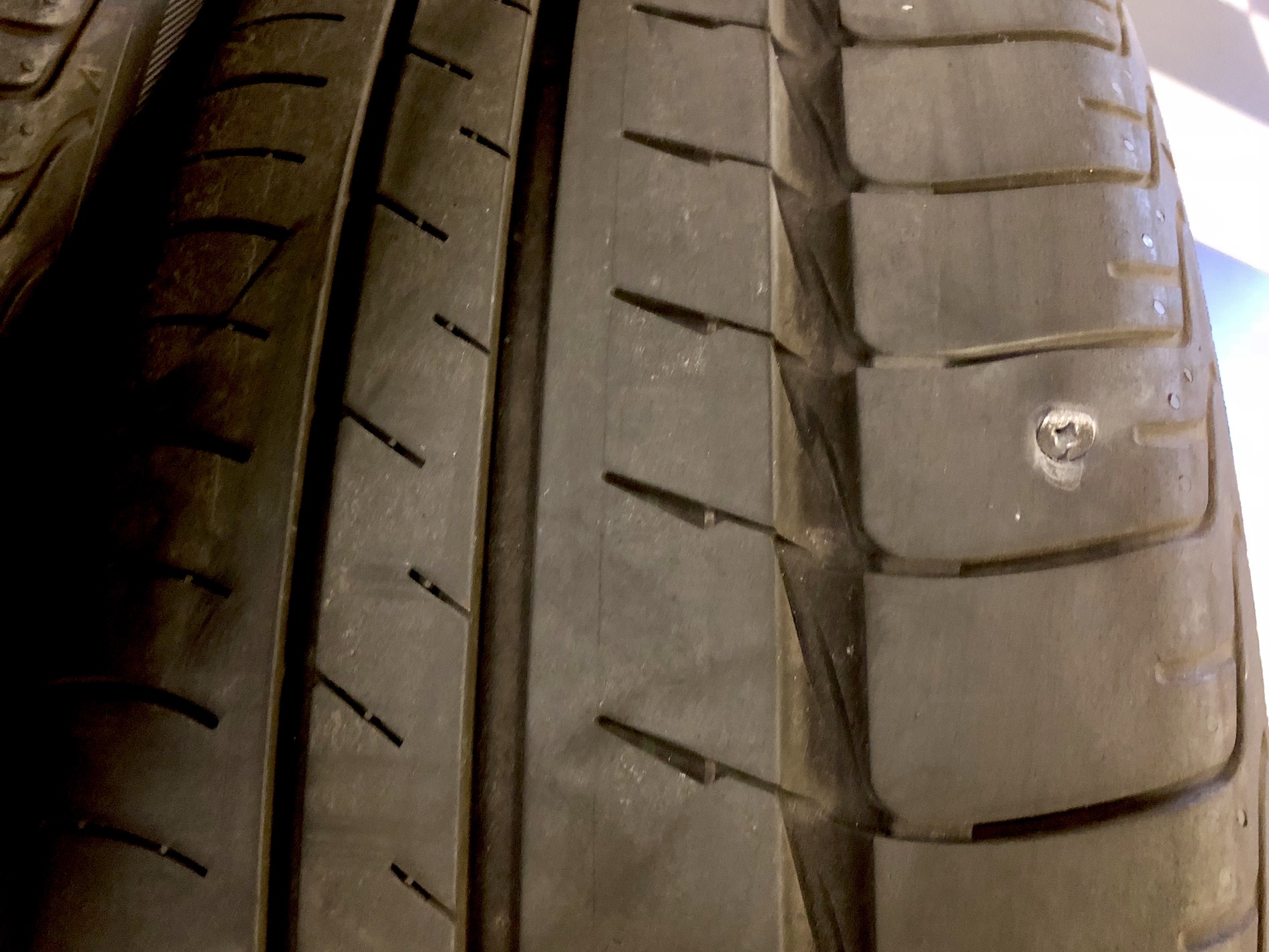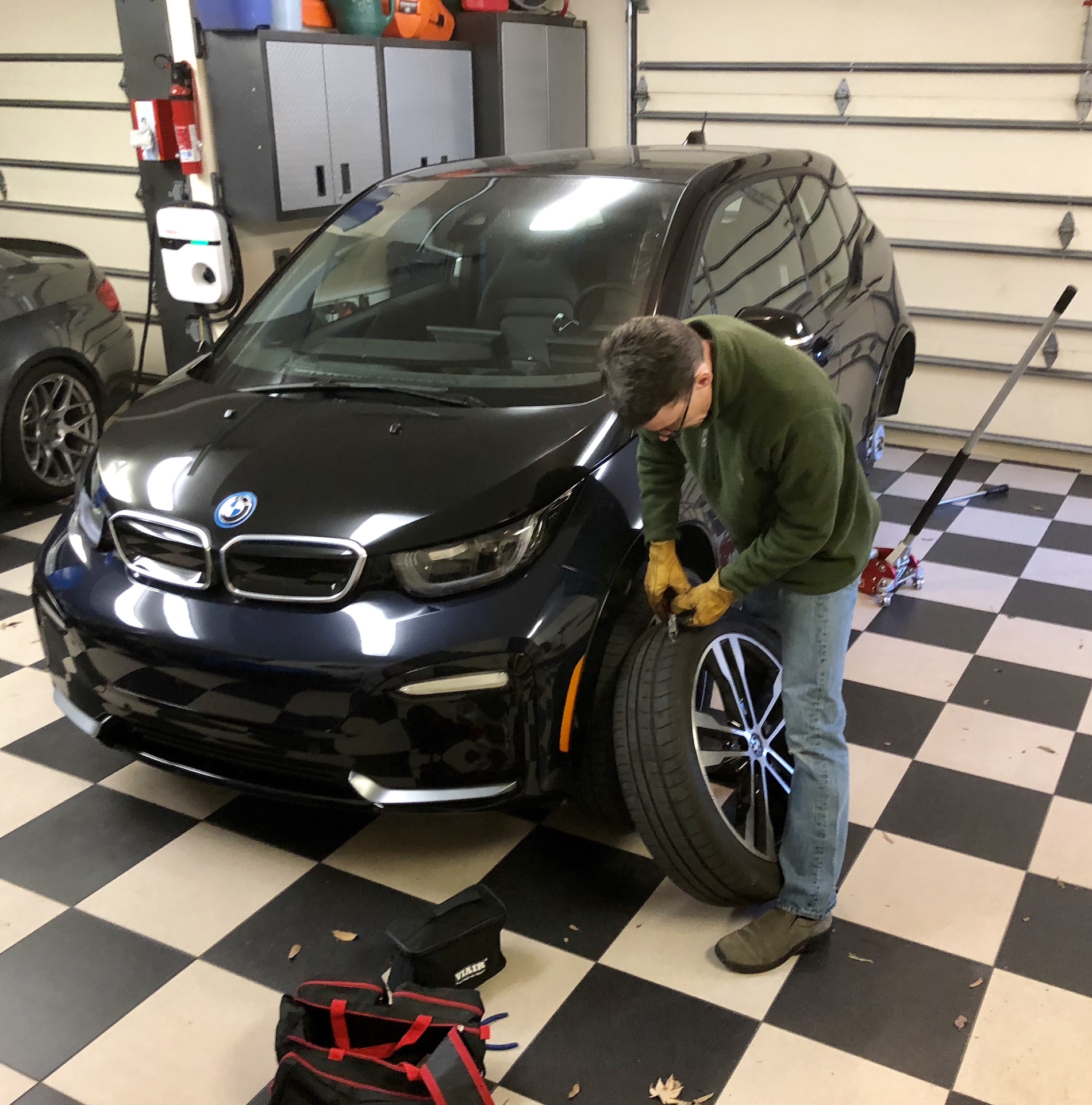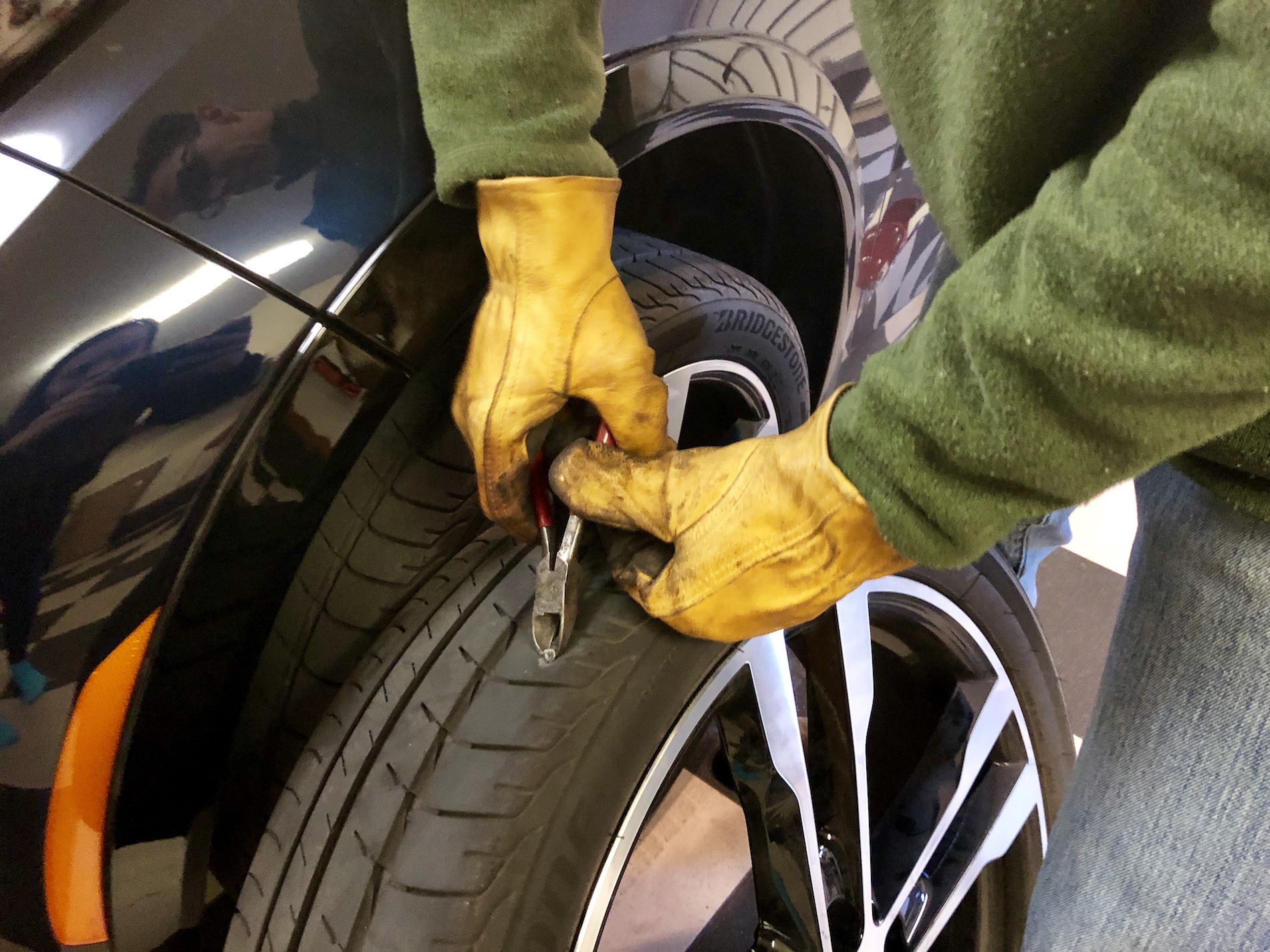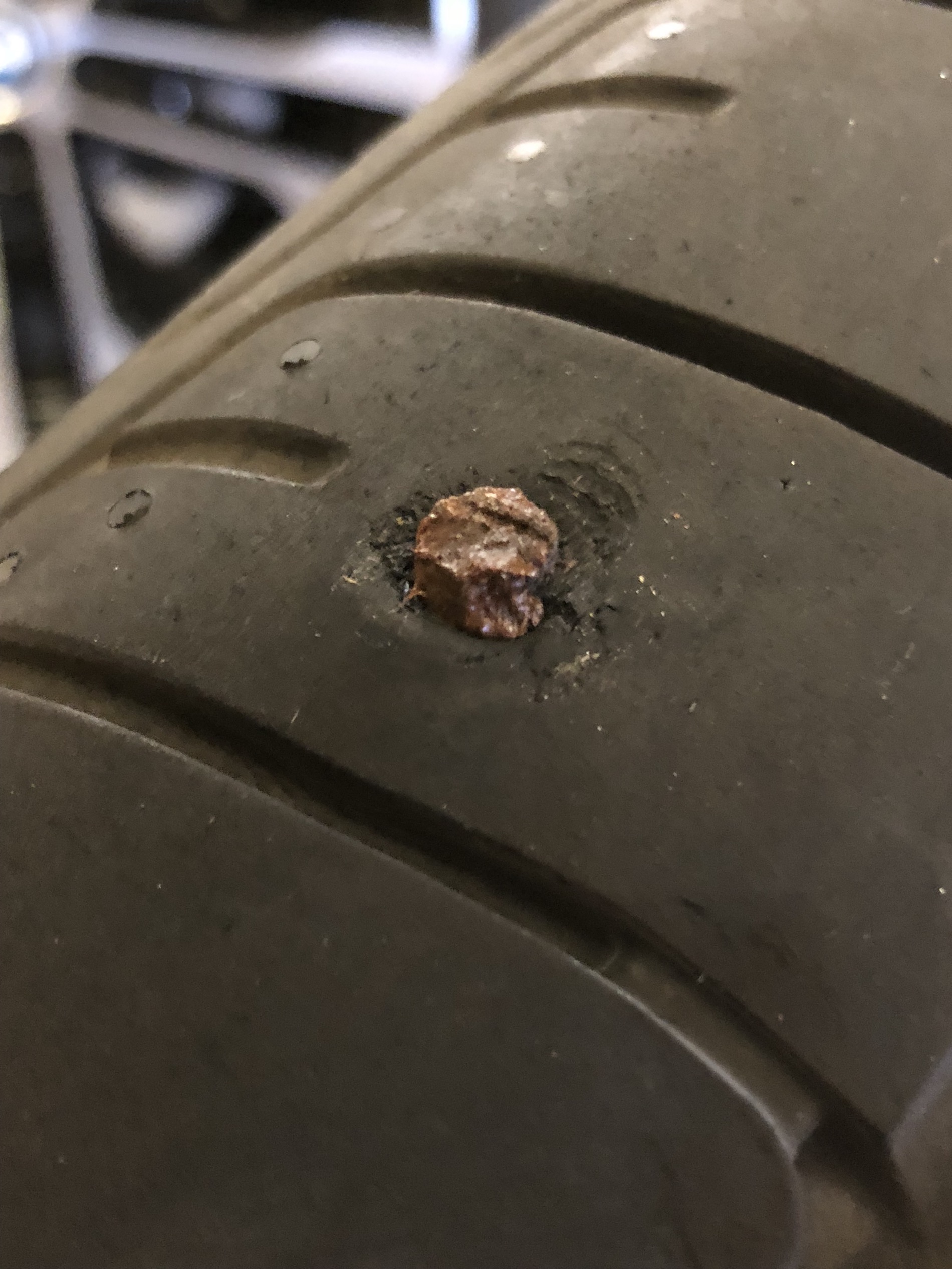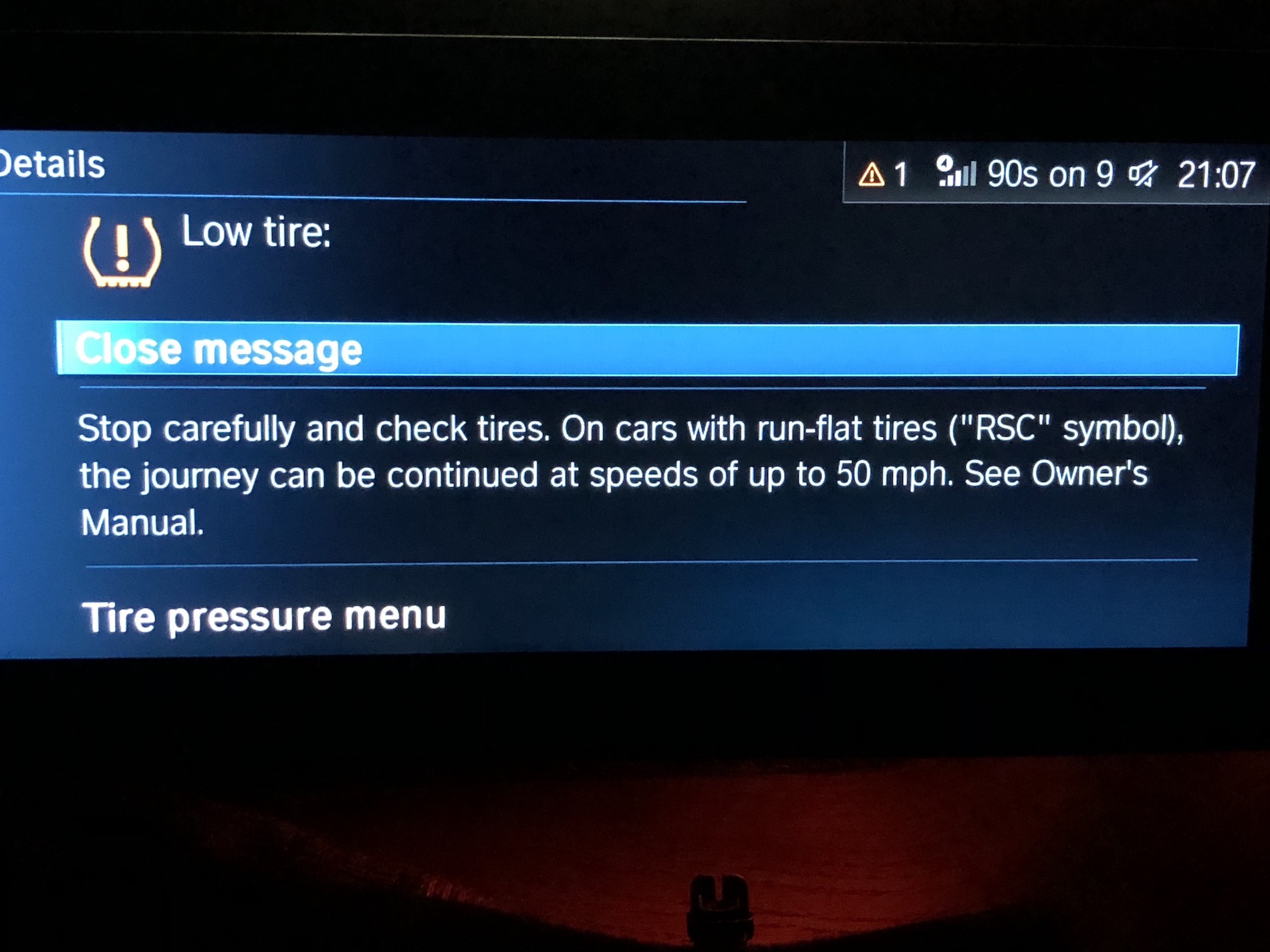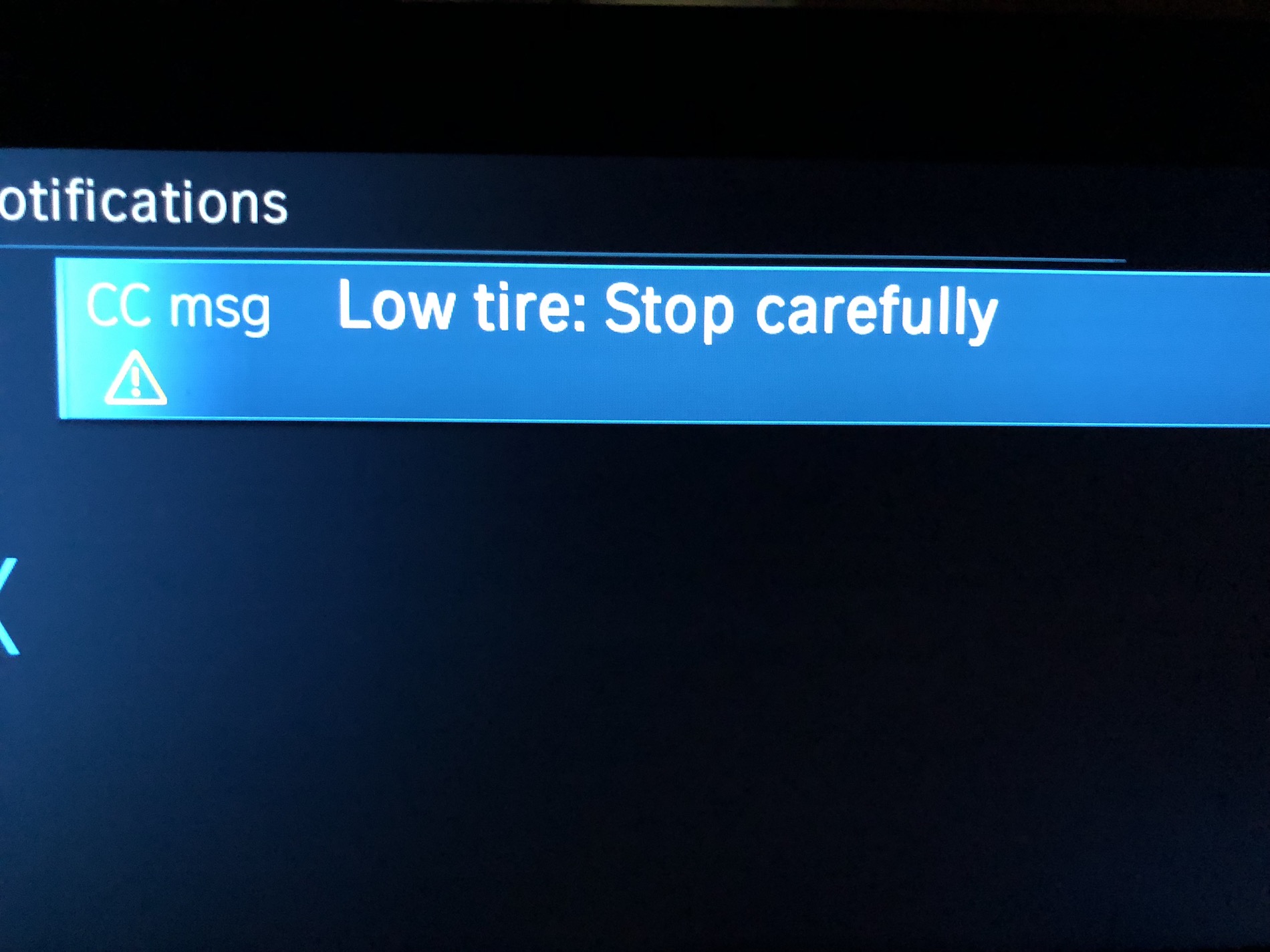BMWBLOG has reported on the BMW i3’s penchant for flat tires before and we are here to report that BMW’s new sport version, the i3s is no different. Our 2018 BMW i3s got its second flat at 4,700 miles. The first flat came early at two months and 2,088 miles.
It is almost like the i3’s tires are magnets for road debris. In the BMW i3 Facebook group, the number of flats survived is almost like a badge of honor anymore. Our 2014 i3 got a flat our second day of ownership at a mere 160 miles on the odometer and for a while held the honors as fastest flat. 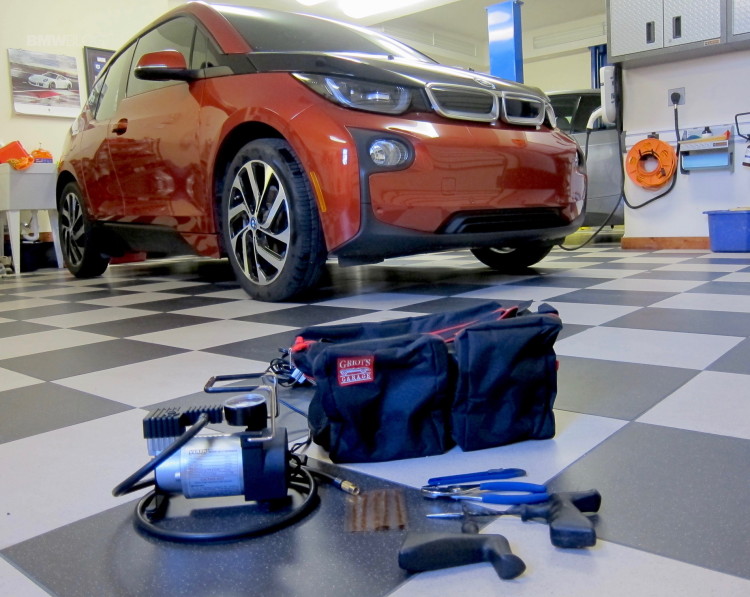 Each time we got a flat, it was BMW’s fantastic tire pressure monitoring system that alerted us about the pressure loss in the tire before the it got so bad the i3 became un-driveable. The TPMS is extremely important as the i3 does not come with a spare tire. The i3 does have a small air pump and a can of “Fix a flat.”
Each time we got a flat, it was BMW’s fantastic tire pressure monitoring system that alerted us about the pressure loss in the tire before the it got so bad the i3 became un-driveable. The TPMS is extremely important as the i3 does not come with a spare tire. The i3 does have a small air pump and a can of “Fix a flat.”
I try to avoid using “fix a flat” though as it rarely works for long and creates a huge mess on the inside of the wheel you have to clean out. Plus according to Consumer Reports, “sealants coat the inside of the tire and wheel with a messy residue, which a tire shop has to clean out, possibly causing extra expense. They can potentially gum up the tire-pressure monitor sensor.”
Our 2018 i3s’s first flat occurred in February when we were leaving work. At 2088 miles the driver’s rear tire was half the pressure it was supposed to be, 20 psi instead of 41. So we topped the tire up with air at a local gas station and crutched it home, watching a live read out of the PSI in the tire the whole way. This flat caused a loss of 20 psi in about 8 hours. When I took the wheel off the car at home, I found a screw in the tread. 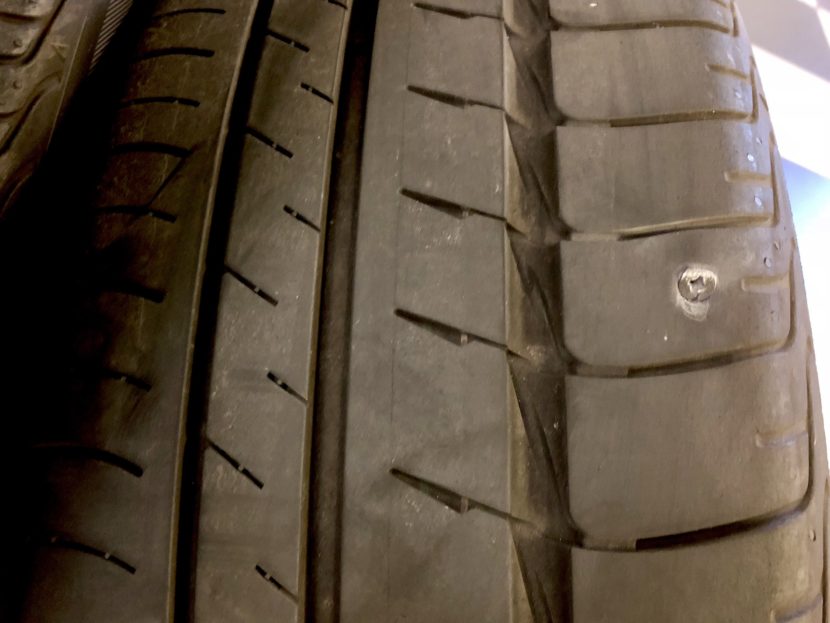
The screw was farther to the lateral part of the tread than what I typically repair, but at the time there were OEM replacement tires had to be overnighted from Europe at the time, so I decided to plug it and see how it held. Four months out, the plug is still holding up great! 
The second flat we got on our 2018 i3s came at 4700 was caused by a thin nail in the passenger rear. This one was a little harder to find as it started as a slow 3 psi/week leak. I pulled the rear tire off and searched the tread for the culprit, finding a small nail in the center.
The repeated i3 flat experiences has led to perhaps the best ever DIY kit I’ve ever bought which is a fix a flat kit from Griots Garage. I am up to at least five tire repairs with it and each one has worked like a champ. I love the tire pump in the kit too that plugs into the cigarette lighter.
Briefly describing the repair process, use a pair of pliers to wiggle the offending screw or nail until it comes out. Once out, you will hear an immediate hiss of air. Then grab the rasp to enlarge and make the hole uniform for the upcoming plug. Next lubricate the rasped hole with the white grease provided.
Next is the toughest part, ramming the plug down in and pulling the sewing needle looking plug tool out. Fortunately the Griots Garage kit gives you a T-styled handle making it easier on your hands.
Make sure to put tire plug in the needle style tool with only 1/3 through loop – meaning don’t center the plug on the tool. It needs to be offset 1/3, 2/3rds. Then jam the thing home in the rasped out hole and pull the tool back out fast so the plug seats. Next cut off the excess sticking out.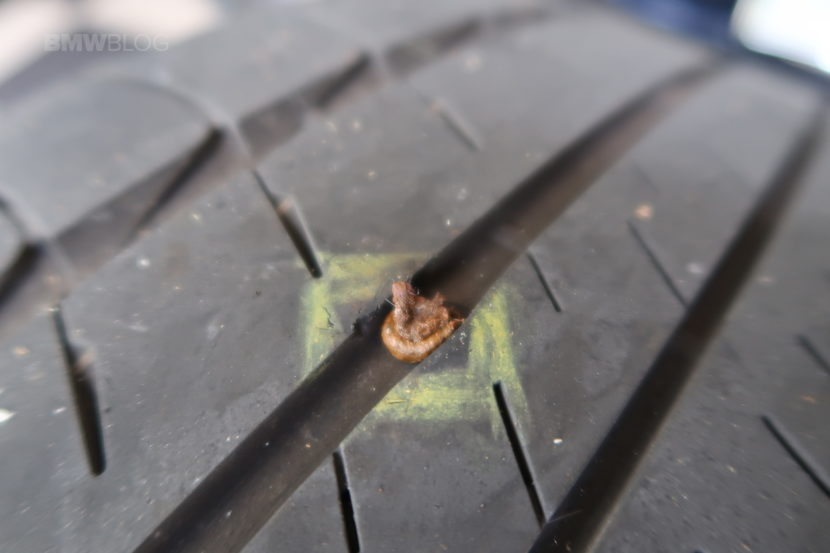
Finally, fill tire back up with air to confirm it is holding pressure. The BMW i3 takes 33psi front and 41 psi in rear for both the i3 and the i3s. Last is to torque the wheels on the i3s down to 140 Nm. I like to drive the car until the TPMS registers again on the dash, park and re-torque the wheel. 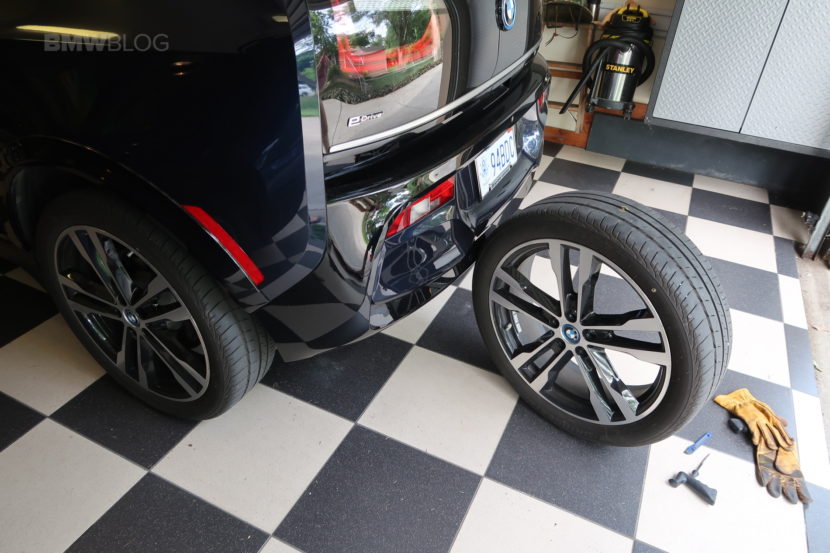 Patching would probably be the best option and what I will do if a plug fails but this involves a trip to a tire shop. Fixing a flat at home with a plug kit is just so much more fast and convenient. We love our i3s but keeping repairing flats is proving to be quite a challenge!See more photos of the flat repair process:
Patching would probably be the best option and what I will do if a plug fails but this involves a trip to a tire shop. Fixing a flat at home with a plug kit is just so much more fast and convenient. We love our i3s but keeping repairing flats is proving to be quite a challenge!See more photos of the flat repair process:


